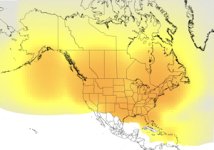Out in the middle of the Pacific includes places such as Hawaii and the Aleutian Islands. And I notice that we have a C-Brat on the north shore of Alaska as well. And whilst there are no C-Dories making the transit from Hawaii to Tahiti, we have a lot of them in areas that Globalstar considers fringe. My post was to meant to suggest to check before you get committed.
The global satellite business is interesting to watch. Globalstar started in the late '80s, launched in the '90s and went bankrupt in the '00s, which appears to be a typical life cycle. A great idea, too expensive to sustain business, bankruptcy lowers the cost and it keeps on going. A LLC group bought Globalstar and is launching a second round of satellites that are supposed to last longer. Built in Italy, still launched by the Russians.
The Globsalstar satellite is a "bent-pipe," which just means that the satellite receives an uplink signal from (in this case) a phone and retransmits the signal back to the ground with minimal processing. Now a spacecraft has very limited power to transmit messages as well as limited space for antennas, so the antennas are aimed at populated areas and the power spent on the highest volume of messages. They aren't interested in waiting for a guy in "an out of the way" place to call and their coverage shows it. They want to serve the places on earth with the highest number of cell phones, such as the USA. If you look at their worldwide coverage, there is no signal in Africa, for instance. And the light yellow indicates a weak signal.
Thus, if your out of the way area is somewhere in the middle of the Mohave Desert, you're going to get a decent signal, because Grobalstar has to cover the USA. However, if you're 100 miles (167 KM as the Canadians say,) north of Prince Rupert and inland, I'd make a test run before I'd depend on it.
Boris


